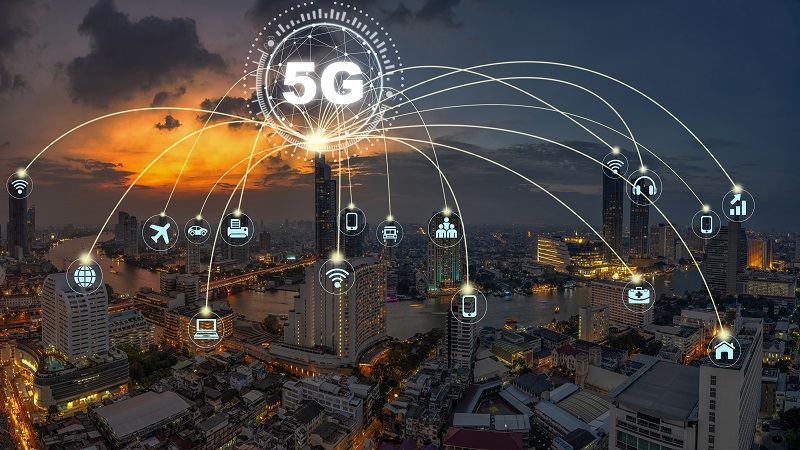
The Department of Defense (DoD) may rely on public infrastructure for 5G networks in the future, according to Thomas Rondeau, the principal director for FutureG in the DoD.
Rondeau said during a Defense One event on Aug. 6 that the future of 5G may include integrated sensing and communications (ISAC), which uses radio signals from networks to detect and analyze objects, enhance operations, and enable new services like gesture recognition and environment reconstruction.
“If we can make sense of this data, if we can integrate that with this entire network, this global information infrastructure, all the towers that are out there, all the phones, all the radios that are in our pockets and in the cities and landscape around us, it can start telling us a whole lot about what’s going on,” said Rondeau.
In 2020, the DoD released a five-year plan to implement 5G, which focused on the data and machine communication capabilities of 5G in addition to the potential for warfare and logistics, and customization and security elements. Since the plan’s release, Rondeau said the DoD has faced financial challenges and its ability to rapidly scale 5G networks.
He said that the Marine Corps in Albany N.Y., has a private 5G network, while other locations, such as Coronado Calif., have a roaming agreement with AT&T that allows it to utilize public infrastructure while keeping information secure.
“If we were to deploy our own network, or network slicing or roaming agreements or enabling a mobile virtual network operator, each one of those that I just mentioned is part of a continuum of options for making use of existing infrastructure,” said Rondeau. “Each one comes with a different cost and complexity and security posture.”
ISAC may help with monetizing and promoting the development of 5G infrastructure by telecom providers. However, this also comes with security risks, Rondeau explained, especially in regions such as Africa where U.S. control is limited.
“It starts telling the network or whoever’s inside, a lot about who you are. So, there’s a huge privacy problem that we’re looking out for. There’s a huge operational security problem that we in the DoD are concerned about,” said Rondeau.
Ensuring that telecoms providers are trusted, such as Samsung and Ericsson, and implementing zero trust architecture – which is the standard to never automatically trust any user or system – are some ways that security risks can be mitigated, Rondeau shared. In addition to the zero trust standards, thorough screening and evaluation of telecom providers plays a role in security.
“Our relationship with the country and our relationship with the companies, the telcos, is going to determine our security assessment and the business approach we would take in order to work with our network,” said Rondeau.
